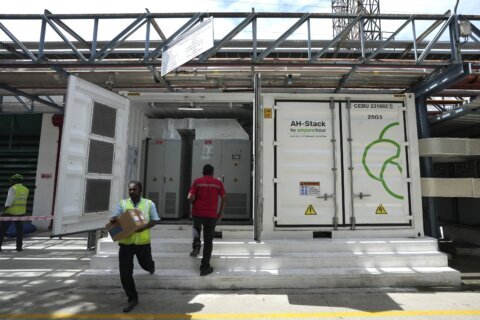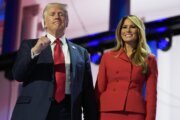For bonds, 2022 was a year of historically high losses, incurred amidst the most aggressive interest rate hiking cycle to take place in decades.
Halfway through 2023, the narrative has shifted toward the current inverted yield curve, a rare scenario where long-term fixed income securities have lower yields than their short-term counterparts.
“In an effort to combat inflation, the Federal Reserve, or Fed, has aggressively hiked interest rates in 2022 in an attempt to cool down the economy,” says Mark Andraos, associate portfolio manager at Regency Wealth Management. “The reality is, the Fed can really only control the short end of the yield curve, which is why we’re seeing such an inversion.”
[Sign up for stock news with our Invested newsletter.]
Normally, the yield curve displays an upward slope, which reflects a dynamic where lenders demand higher interest rates on longer maturity loans. This is logical, as lenders are exposing their money to more risk over a longer period of time, so they want a better return.
However, if investors start to believe that the economy will be worse in the future, they might expect the Fed to cut interest rates to stimulate growth. Anticipating a bad recession, investors may begin to buy long-term bonds to lock in rates before they go lower. This increased demand drives up the price of these bonds, and since bond prices move inversely to yields, the yield on long-term bonds decreases.
Historically, an inverted yield curve has been a fairly accurate forecaster of economic downturns, as it portrays a picture of investor sentiment that is pessimistic about the future. The market’s expectation of poor future economic conditions, combined with the subsequent actions of investors, can become a sort of self-fulfilling prophecy.
However, an inverted yield curve isn’t an unfailing predictor of a recession. “Most market participants believe that an inverted yield curve is an indicator of an upcoming recession, but there is an old expression that says five out of the last four recessions have been predicted by an inverted yield curve, meaning it’s not exactly the greatest indicator of an upcoming recession,” Andraos says.
In the event that the current inverted yield curve does herald a coming recession, investors can flock to bonds for their traditionally low correlation with equities. This stems from the bond’s fixed-interest payments that provide a consistent income stream regardless of market conditions, along with the potential for price appreciation should interest rates be cut.
Here’s a look at nine of the best bond exchange-traded funds, or ETFs, to buy in 2023:
| Bond ETF | Expense ratio | 30-day SEC yield |
| iShares Short Treasury Bond ETF (ticker: SHV) | 0.15% | 5% |
| iShares 20+ Year Treasury Bond ETF (TLT) | 0.15% | 3.9% |
| iShares Core U.S. Aggregate Bond ETF (AGG) | 0.03% | 4.2% |
| iShares Core Total USD Bond Market ETF (IUSB) | 0.06% | 4.6% |
| Invesco Treasury Collateral ETF (CLTL) | 0.08% | 5.1% |
| Invesco 1-30 Laddered Treasury ETF (PLW) | 0.15% | 3.9% |
| Invesco BulletShares 2025 Corporate Bond ETF (BSCP) | 0.1% | 5.5% |
| Vanguard Total Bond Market ETF (BND) | 0.03% | 4.5% |
| Vanguard Total Corporate Bond ETF (VTC) | 0.04% | 3.4% |
iShares Short Treasury Bond ETF (SHV)
“Due to the inverted yield curve, investors could benefit from owning short-dated Treasurys, as short-term rates between zero and two years are yielding higher around 5%, while longer-dated Treasurys around three to 10 years are yielding closer to 4% to 4.5%,” Andraos says.
SHV is a bond ETF with a 0.15% expense ratio that emphasizes short-term Treasurys with maturities of one year or less. It currently pays an average yield to maturity of 5.2%, which is the return an investor can expect should all of SHV’s underlying Treasurys be held until maturity.
iShares 20+ Year Treasury Bond ETF (TLT)
“The risk to owning shorter-dated treasuries at this juncture would be if intermediate or longer-term rates dropped further, as longer-dated bonds are more interest rate sensitive and would benefit more from the inverse relationship between yields and prices,” Andraos says.
In the event of a recession and rate cut, a long-term Treasury ETF like TLT with a higher duration of 17.3 years could have significant upside. “You would not get the benefit of price appreciation for shorter-dated bonds as you would if rates dropped while owning longer dated bonds,” Andraos says.
iShares Core U.S. Aggregate Bond ETF (AGG)
Long-term investors looking for a diversified bond ETF to buy and hold may not be worried as much about timing future interest rate movements. In that case, an aggregate bond ETF like AGG could be a low-cost way of passively indexing the broad U.S. bond market.
AGG tracks the Bloomberg US Aggregate Bond Index, a popular benchmark of overall U.S. fixed income performance. The ETF is diversified across over 9,000 bonds of various maturities and includes both U.S. government Treasurys and investment-grade corporate bonds. AGG charges a 0.03% expense ratio.
[Read: 5 Best Bond Funds for Retirement.]
iShares Core Total USD Bond Market ETF (IUSB)
While highly diversified, AGG doesn’t actually track the entire U.S. bond market. In particular, the ETF lacks an allocation to high-yield bonds. Also known as “junk bonds,” these investments have a much lower credit rating, reflecting their higher default risk. In return, they tend to pay much higher yields.
Investors interested in taking on more risk in their portfolio can substitute IUSB for AGG. This ETF tracks the Bloomberg U.S. Universal Index. Essentially, IUSB takes AGG’s portfolio, and adds around a 6% allocation to bonds rated BB and below. The ETF charges a 0.06% expense ratio.
Invesco Treasury Collateral ETF (CLTL)
“For investors looking to access historically high yields on U.S. Treasury bills with minimal duration, CLTL is one of the lowest cost vehicles to do so with an expense ratio of 0.08%,” says Brian McMullen, fixed income ETF strategist at Invesco. This ETF only holds Treasurys with a maximum maturity of 12 months.
Thanks to its high credit rating and short duration, CLTL is insulated from both market risk and interest rate risk. “For investors looking to park cash and access high-quality yield, CLTL should remain an attractive vehicle while the Fed keeps short-term rates elevated,” McMullen says.
Invesco 1-30 Laddered Treasury ETF (PLW)
“PLW is a way to access high-quality, long-duration Treasurys, with the potential to outperform shorter duration strategies if we see interest rates decrease across the curve from their current levels over the coming months,” McMullen says. The ETF charges a 0.15% expense ratio.
Unlike SHV or TLT, PLW holds a portfolio of Treasurys across the yield curve via a laddered strategy. “PLW is equally weighted to securities from one to 30 years across the US. Treasury yield curve,” McMullen says. This makes the ETF a more balanced play on the yield curve.
Invesco BulletShares 2025 Corporate Bond ETF (BSCP)
“While yields are historically attractive, many investors may be hesitant in the midst of higher interest rate volatility and uncertainty around future returns in their bond portfolio,” McMullen says. A solution here may be target-maturity bonds like BSCP, which charges a 0.1% expense ratio.
BSCP is one of Invesco’s BulletShares bond ETFs, which have a defined maturity date. In the case of BSCP, the ETF’s portfolio of investment-grade corporate bonds is set to mature in 2025. “BulletShares ETFs like BSCP can offer investors greater visibility around the future return profile,” McMullen says.
Vanguard Total Bond Market ETF (BND)
Another popular low-cost aggregate bond ETF that offers investors diversified exposure to the broad U.S. bond market is BND. BND tracks the Bloomberg U.S. Aggregate Float Adjusted Index, which is a variation of the index used by AGG. It also charges a low 0.03% expense ratio.
BND is currently paying a yield to maturity of 4.6%, with an intermediate average duration of 6.5 years. Its portfolio consists of many of the same Treasurys and investment grade corporate bonds found in AGG. The ETF also comes in a mutual fund form as the Vanguard Total Bond Market Index Fund (VBTLX).
Vanguard Total Corporate Bond ETF (VTC)
Fixed-income investors willing to take on greater credit risk for the potential of higher yields may find aggregate bond ETFs like BND too conservative. These ETFs tend to have a high proportion of Treasurys and other government-issued fixed-income securities, which yield less.
A possible alternative is VTC, which only focuses on investment-grade corporate bonds and pays an average yield to maturity of 5.4%. The ETF holds three underlying Vanguard corporate bond ETFs corresponding to short-, intermediate- and long-term maturities respectively for a 0.04% expense ratio.
More from U.S. News
7 Best Dividend ETFs to Buy Now
9 of the Best Bond ETFs to Buy Now originally appeared on usnews.com
Update 07/11/23: This story was previously published at an earlier date and has been updated with new information.







